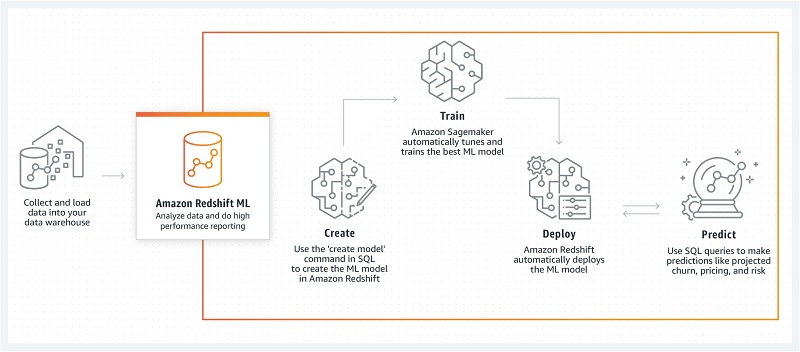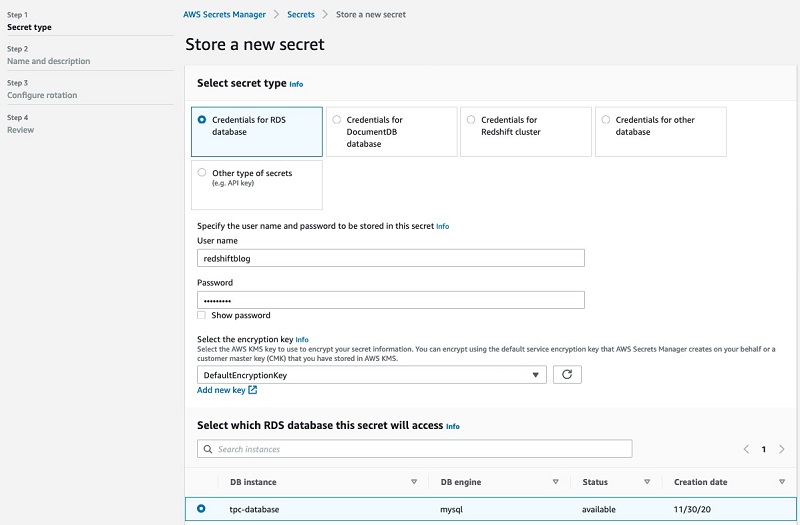AWS Big Data Blog
Category: Amazon Redshift
Work with semistructured data using Amazon Redshift SUPER
With the new SUPER data type and the PartiQL language, Amazon Redshift expands data warehouse capabilities to natively ingest, store, transform, and analyze semi-structured data. Semi-structured data (such as weblogs and sensor data) fall under the category of data that doesn’t conform to a rigid schema expected in relational databases. It often contain complex values […]
Implementing multi-tenant patterns in Amazon Redshift using data sharing
Software service providers offer subscription-based analytics capabilities in the cloud with Analytics as a Service (AaaS), and increasingly customers are turning to AaaS for business insights. A multi-tenant storage strategy allows the service providers to build a cost-effective architecture to meet increasing demand. Multi-tenancy means a single instance of software and its supporting infrastructure is […]
The best new features for data analysts in Amazon Redshift in 2020
This is a guest post by Helen Anderson, data analyst and AWS Data Hero Every year, the Amazon Redshift team launches new and exciting features, and 2020 was no exception. New features to improve the data warehouse service and add interoperability with other AWS services were rolling out all year. I am part of a […]
Dream11’s journey to building their Data Highway on AWS
This is a guest post co-authored by Pradip Thoke of Dream11. In their own words, “Dream11, the flagship brand of Dream Sports, is India’s biggest fantasy sports platform, with more than 100 million users. We have infused the latest technologies of analytics, machine learning, social networks, and media technologies to enhance our users’ experience. Dream11 […]
Announcing Amazon Redshift federated querying to Amazon Aurora MySQL and Amazon RDS for MySQL
Since we launched Amazon Redshift as a cloud data warehouse service more than seven years ago, tens of thousands of customers have built analytics workloads using it. We’re always listening to your feedback and, in April 2020, we announced general availability for federated querying to Amazon Aurora PostgreSQL and Amazon Relational Database Service (Amazon RDS) […]
Creating a source to Lakehouse data replication pipe using Apache Hudi, AWS Glue, AWS DMS, and Amazon Redshift
February 2021 update – Please refer to the post Writing to Apache Hudi tables using AWS Glue Custom Connector to learn about an easier mechanism to write to Hudi tables using AWS Glue Custom Connector. In this post, we include the modified Apache Hudi JARs as an external dependency. The AWS Glue Custom Connector feature […]
Accessing external components using Amazon Redshift Lambda UDFs
Amazon Redshift is a fast, scalable, secure, and fully managed cloud data warehouse. It makes it simple and cost-effective to analyze all your data using standard SQL, your existing ETL (extract, transform, and load), business intelligence (BI), and reporting tools. Tens of thousands of customers use Amazon Redshift to process exabytes of data per day […]
Get started with Amazon Redshift cross-database queries (preview)
Amazon Redshift is a fast, scalable, secure, and fully managed cloud data warehouse that makes it simple and cost-effective to analyze all your data using standard SQL and your existing ETL, business intelligence (BI), and reporting tools. Tens of thousands of customers use Amazon Redshift to process exabytes of data per day and power analytics […]
Migrating IBM Netezza to Amazon Redshift using the AWS Schema Conversion Tool
The post How to migrate a large data warehouse from IBM Netezza to Amazon Redshift with no downtime described a high-level strategy to move from an on-premises Netezza data warehouse to Amazon Redshift. In this post, we explain how a large European Enterprise customer implemented a Netezza migration strategy spanning multiple environments, using the AWS […]
Federating Amazon Redshift access from OneLogin
December 2022: This post was reviewed and updated for accuracy. You can use federation to access AWS accounts using credentials from a corporate directory, utilizing open standards such as SAML, to exchange identity and security information between an identity provider (IdP) and an application. With this integration, you manage user identities to AWS resources centrally […]









